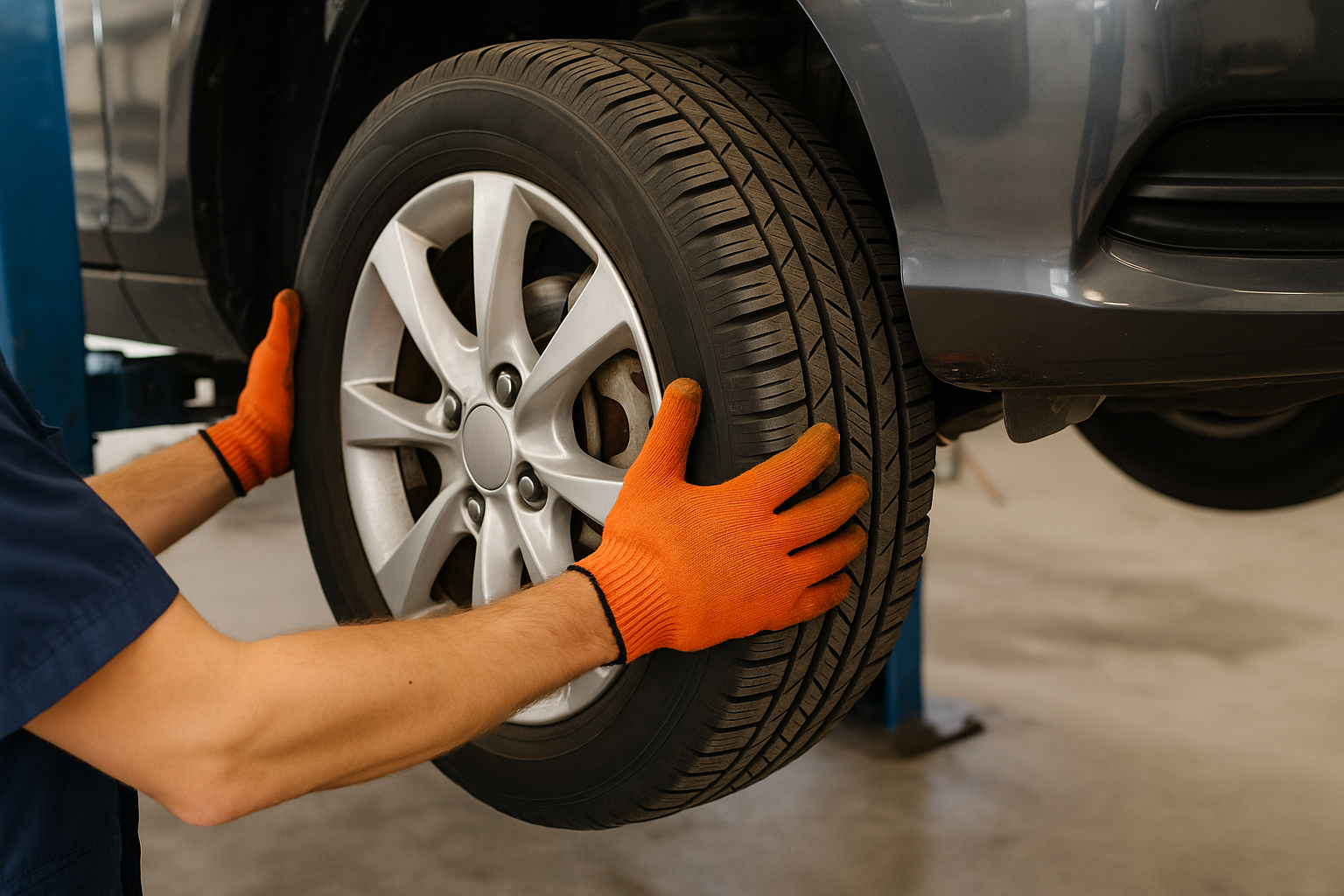Proper tire rotation is one of the simplest yet most effective ways to maximize tire longevity and maintain vehicle safety. By following a consistent tire rotation guide, you can ensure your tires wear evenly, improve handling, and get the most miles out of each set. In this article, we’ll explain why rotation matters, when to rotate, and provide a step‑by‑step rotate tires DIY procedure.
1. Why Rotate Your Tires?
Tires wear differently depending on their position on the vehicle. Front wheels handle steering, braking, and most of the vehicle’s weight, causing more rapid wear on front tires. Rear tires may wear more evenly but still benefit from swapping positions. Regular rotation balances wear patterns, delivering benefits such as:
- Improved Handling: Evenly worn tires maintain consistent traction and steering response.
- Extended Tire Life: Balanced wear delays the need for replacement, maximizing your investment.
- Enhanced Fuel Efficiency: Properly rotating and maintaining tires reduces rolling resistance.
- Safer Performance: Even tread depth helps maintain braking distances and wet weather grip.
2. When to Rotate Your Tires
Most manufacturers recommend rotating tires every 5,000–8,000 miles, often coinciding with oil changes. However, you should inspect tread depths and wear patterns every 3,000 miles and rotate sooner if you notice uneven wear. Key indicators include:
- Feathered or scalloped edges on front tires
- Center wear on overinflated rear tires
- Excessively worn outer shoulders
Consult your owner’s manual for specific intervals, but aim for at least two rotations per year for regular drivers.
3. Common Rotation Patterns
Your vehicle’s drivetrain—front‑wheel drive (FWD), rear‑wheel drive (RWD), all‑wheel drive (AWD)—determines the best rotation pattern. Below are the most common configurations:
3.1 Forward Cross (FWD Vehicles)
- Front-left → Rear-right
- Front-right → Rear-left
- Rear-left → Front-left
- Rear-right → Front-right
3.2 X‑Pattern (RWD & AWD Vehicles)
- Front-left → Rear-right
- Front-right → Rear-left
- Rear-left → Front-right
- Rear-right → Front-left
3.3 Rearward Cross (RWD Vehicles)
- Rear-left → Front-left
- Rear-right → Front-right
- Front-left → Rear-right
- Front-right → Rear-left
4. DIY Tire Rotation Step‑by‑Step
Follow this rotate tires DIY procedure to perform your own rotation safely and efficiently.
Tools & Materials
- Floor jack and jack stands
- Lug wrench or impact gun
- Tire pressure gauge
- Marker or chalk to label tire positions
- Torque wrench (for lug nuts)
Procedure
- Park & Prepare: Choose level ground, engage the parking brake, and block wheels to prevent rolling.
- Loosen Lug Nuts: Break lug nuts loose on all four wheels before lifting the vehicle. Do not remove them completely yet.
- Lift Vehicle: Use a floor jack to raise one corner, then secure with jack stands. Repeat for each corner as you rotate.
- Remove Tires: Fully remove lug nuts and take off tires, keeping track of each position (e.g., “FL” for front‑left).
- Apply Rotation Pattern: Swap tires according to your vehicle’s drivetrain and chosen rotation pattern.
- Reinstall & Hand‑Tighten: Put tires back on hubs, hand‑tighten lug nuts in a star or crisscross sequence.
- Lower & Torque: Carefully lower the vehicle and use a torque wrench to tighten lug nuts to manufacturer specifications.
- Check Pressure & Inspect: Verify tire pressures match recommended values and inspect for any damage or debris.
5. Tips for Maximizing Tire Longevity
- Maintain Proper Inflation: Check tire pressure monthly to avoid uneven wear.
- Balance & Align: Have tires balanced and wheels aligned annually or when you notice vibration.
- Monitor Tread Depth: Use a gauge to ensure tread remains above 2/32″ for safe operation.
- Rotate Regularly: Consistent rotations according to your tire rotation guide will spread wear evenly.
Conclusion
Performing your own tire rotations with this comprehensive tire rotation guide not only saves money but also enhances safety and performance. By rotating every 5,000–8,000 miles, following the correct pattern for your drivetrain, and combining rotation with proper inflation, balancing, and alignment, you’ll extend tire life and ensure a smoother, safer ride. Make tire care a routine part of your maintenance schedule, and your tires will thank you with thousands of additional miles of dependable service.
